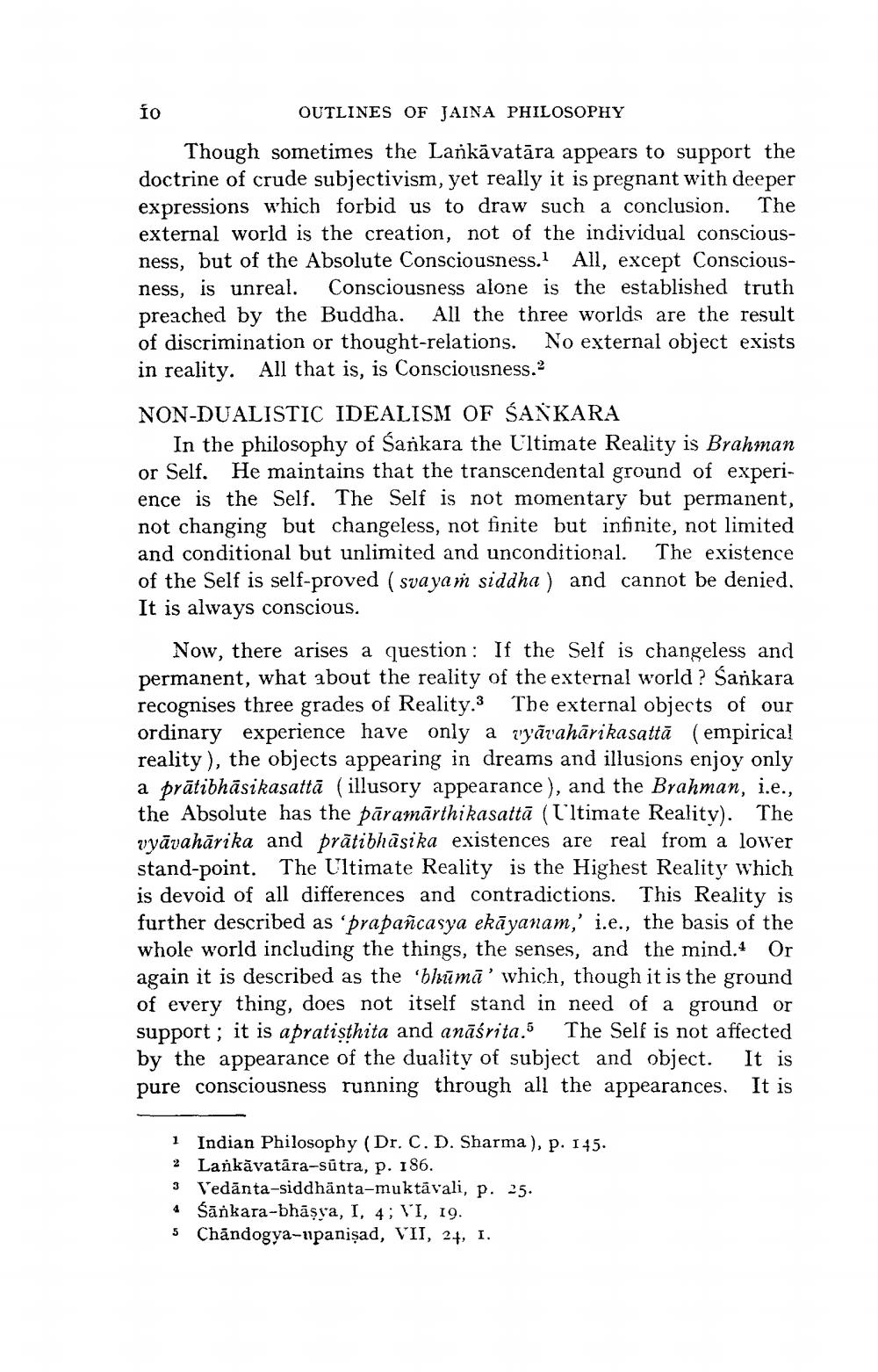________________
10
OUTLINES OF JAINA PHILOSOPHY
Though sometimes the Lankāvatāra appears to support the doctrine of crude subjectivism, yet really it is pregnant with deeper expressions which forbid us to draw such a conclusion. The external world is the creation, not of the individual consciousness, but of the Absolute Consciousness. All, except Consciousness, is unreal. Consciousness alone is the established truth preached by the Buddha. All the three worlds are the result of discrimination or thought-relations. No external object exists in reality. All that is, is Consciousness.
NON-DUALISTIC IDEALISM OF SANKARA
In the philosophy of Sankara the Cltimate Reality is Brahman or Self. He maintains that the transcendental ground of experience is the Self. The Self is not momentary but permanent, not changing but changeless, not finite but infinite, not limited and conditional but unlimited and unconditional. The existence of the Self is self-proved ( svayam siddha ) and cannot be denied. It is always conscious.
Now, there arises a question: If the Self is changeless and permanent, what about the reality of the external world ? Sankara recognises three grades of Reality.3 The external objects of our ordinary experience have only a tyāvahārikasattā (empirical reality), the objects appearing in dreams and illusions enjoy only a prātibhāsikasattā (illusory appearance), and the Brahman, i.e., the Absolute has the pāramārthikasattā (l'ltimate Reality). The vyāvahārika and prātibhâsika existences are real from a lower stand-point. The Ultimate Reality is the Highest Reality which is devoid of all differences and contradictions. This Reality is further described as 'prapañcasya ekāyanam,' i.e., the basis of the whole world including the things, the senses, and the mind.4 Or again it is described as the 'blūmā' which, though it is the ground of every thing, does not itself stand in need of a ground or support; it is a pratisthita and anāśrita.5 The Self is not affected by the appearance of the duality of subject and object. It is pure consciousness running through all the appearances. It is
1 Indian Philosophy (Dr. C. D. Sharma), p. 145. 2 Lankavatāra-sútra, p. 186. 3 Vedānta-siddhānta-muktāvali, p. 25. 4 Śānkara-bhāṣva, I, 4; VI, 19. 5 Chåndogya-upanişad, VII, 24, I.




